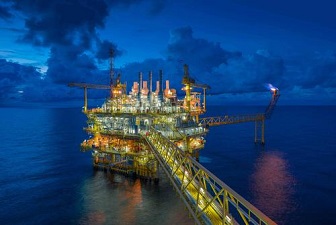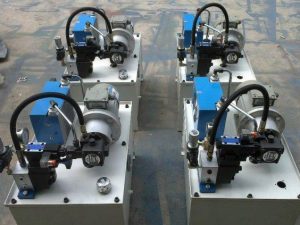What is a Hydraulic Control Valve Mechanism?

What are the functions of the hydraulic control valves?
Hydraulic control valves are used to adjust the flow rate of hydraulic fluid in a hydraulic system. These valves have a port that is able to be adjusted so that the flow area may be changed to provide an alteration in the flow rate through the valve.
How Does a Hydraulic Control Valve Work?
Within a hydraulic system, a flow-control valve will be used to control the rate of flow to hydraulic cylinders and motors, which in turn will impact the speed of both of those devices. Hydraulic flow-control valves also have a secondary function of managing the energy transfer rate at a specified pressure.
1. What is the hydraulic control valve?
The hydraulic control valve is a kind of valve that is controlled by water pressure. It consists of the main valve and other accessories such as conduit, pilot valve, needle valve, sanitary ball valve, and pressure gauge.
2. What are the types of hydraulic control valves?
According to different purposes of use, functions, and occasions of use, there are remote control float valves, pressure relief valves, slow-closing check valves, flow control valves, hydraulic electric control valves, and water pump control valves. According to the structure, it can be divided into diaphragm type and piston type.
3. The diaphragm type hydraulic control valve mechanism VS piston type hydraulic control valve
The diaphragm type and piston type hydraulic control valve share the same mechanism.
They both use the pressure difference between upstream and downstream as power. They are controlled by a pilot valve to make the diaphragm (piston) perform the hydraulically differential operation, which is completely automatically adjusted by hydraulic power so that the main valve disc is fully open or fully closed or in the regulatory state. When the pressure water entering the upper control chamber of the diaphragm (piston) is discharged to the atmosphere or downstream low-pressure zone, the pressure on the bottom of the valve disc and diaphragm is larger than the pressure on the top, pushing the main valve disc to fully open position.
When the pressure water entering the upper control chamber of the diaphragm (piston) can’t be discharged to the atmosphere or downstream low-pressure zone, the pressure on the top of the valve disc and diaphragm is larger than the pressure on the bottom, pushing the main valve disc to the fully closed position.
When the pressure in the upper control chamber of the diaphragm (piston) is between the inlet pressure and outlet pressure, the main valve disc is in a regulated state and its position of adjustment depends on the joint control effect of the needle valve and adjustable pilot valve of the conduit system. The adjustable pilot valve can use the downstream outlet pressure to enlarge or tighten the valve opening, thereby changing the pressure value in the upper control chamber of the diaphragm (piston) and controlling the adjustment position of the main valve disc.
Conclusion
Thank you for reading our article and we hope it can help you better understand the mechanism of the hydraulic control valves. If you want to learn more about hydraulic control valves, we would like to advise you to visit Adamant Valve homepage for more information.





